Last Updated on June 8, 2025 by Kittredge Cherry
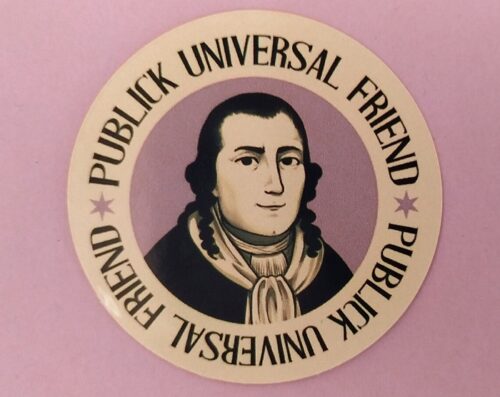
A queer American preacher woke from a near-death experience in 1776 with the sense of being neither male nor female. Adopting the name Publick Universal Friend instead of Jemima Wilkinson, this fascinating nonbinary American fought for gender equality and founded an important religious community.
Update: Bio pages for trans and gender-nonconforming historical figures, including Publick Universal Friend, were deleted from the U.S. National Park Service website in early 2025. It was part of a sweeping campaign to scrub gender identity and LGBTQ resources from federal websites under executive orders by President Donald Trump. While some traces of these pioneers remain elsewhere on NPS.gov, key pieces of queer spiritual history are being erased. Click the following link for an archived version of the deleted page about Publick Universal Friend.
It’s appropriate to consider the Publick Universal Friend around July 4 for Independence Day. In 1776, the same year that America issued the Declaration of Independence, the Friend declared independence from gender. The Friend died on July 1, 1819.
Publick Universal Friend (1752-1819) is sometimes called the first American-born woman to found a religious group, but is also considered a “transgender evangelist.” The breakaway Quaker preacher spoke against slavery and gave medical care to both sides in the Revolutionary War.
The Friend had a severe fever leading to a near-death experience at age 24. Upon waking the person formerly known as Jemima Wilkinson confidently announced to a surprised family that Jemima had died and her body was now inhabited by a genderless “Spirit of Life from God” sent to preach to the world. The newly recovered patient insisted on being called the Publick Universal Friend or simply “the Friend” or “PUF.”
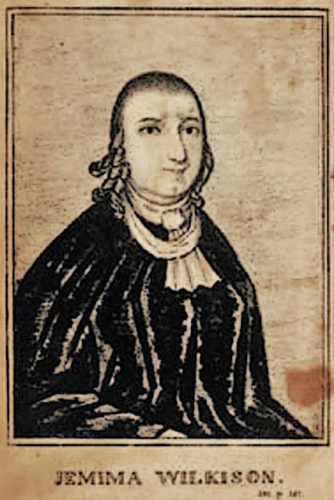
1821 portrait of the Friend from David Hudson’s “History of Jemima Wilkinson, a Preacheress of the Eighteenth Century.” (Wikimedia Commons)
From then on, the Friend refused to respond to the name given at birth or use gendered pronouns, more than 200 years before the 21st-century popularity of nonbinary pronouns. Older images tend to use the birth name of Jemima Wilkinson, while newer portraits, such as the one at the top of this post by Arcane Stag, may emphasize the chosen name of Publick Universal Friend. The image is available from the ArcaneDeer shop on Etsy.
The preacher and prophet known as “the Friend” defies categorization. The Friend has been labeled a “spiritual transvestite” and is on lists of “famous asexuals” and “a gender-variance Who’s Who.” As a gender nonconformist whose life was devoted to God, the Friend fits the definition of a queer saint. The androgynous Friend was many things to many people.
 The Publick Universal Friend continues to fascinate people today. This mysterious person is the subject of at least two authoritative biographies: “The Public Universal Friend: Jemima Wilkinson and Religious Enthusiasm in Revolutionary America” by Paul B. Moyer (2015) and Pioneer Prophetess: Jemima Wilkinson, the Publick Universal Friend
The Publick Universal Friend continues to fascinate people today. This mysterious person is the subject of at least two authoritative biographies: “The Public Universal Friend: Jemima Wilkinson and Religious Enthusiasm in Revolutionary America” by Paul B. Moyer (2015) and Pioneer Prophetess: Jemima Wilkinson, the Publick Universal Friend by Herbert A. Wisbey Jr. (2009).
Rejected for heresy after being reborn as genderless
A baby was born to a Quaker family in Rhode Island on Nov. 29, 1752 and named Jemima Wilkinson. The child showed a strong interest in religion while growing up. On Oct. 13, 1776, the Sunday after being reborn, the Friend gave a public sermon for the first time. Despite being rejected as a heretic by Quaker officials, the Friend went ahead and preached throughout Rhode Island, Massachusetts, Connecticut, and Pennsylvania.
The Friend blended traditional Christian warnings about sin and redemption with Quaker pacifism, abolitionism, plain dress and peaceful relations with Native American Indians. Women had no legal rights in the United States, but the Friend advocated equality of the sexes. The Friend was a firm believer in sexual abstinence.
People were drawn not only to this progressive message, but also to the Friend’s forceful personality and genderbending appearance. The Friend rejected standard women’s attire and hairdos for a unique blend of male and female, commonly wearing a loose black male clergy gown with female petticoats peeking out at the hem. The Friend’s long hair hung to the shoulder. The rest of the Friend’s outfit often included a man’s broad-brimmed hat and women’s colorful scarves.
The first recruits were family members, but the Friend soon attracted a diverse group of followers, including intellectual and economic elites as well as the poor and oppressed. Known as the Universal Friends, they upset some people by proclaiming that the Friend was “the Messiah Returned” or “Christ in Female Form.” The Friend did not make such claims directly.
 |
| Seal of the Universal Friend (Wikimedia Commons) |
The Friend founded the Society of Universal Friends in 1783. Members pooled their money and started a utopian communal settlement in the wilderness near Seneca Lake in upstate New York in 1788. As the first settlers in the region, they cleared the land and became the first white people to meet and trade with the Native Americans there. By 1790 the community had grown to a population of 260.
Like many preachers in American history, the Friend’s authority came from spiritual visions and the ability to communicate them. This inner authority seems especially important for queer religious leaders, who have to overcome expectations about their gender identity and sexual orientation. Another example is Rebecca Cox Jackson, a queer Shakier preacher in the mid-1800s.
Hostile observers put the Friend on trial for blasphemy in 1800, but the court ruled that American courts could not try blasphemy cases due to the separation of church and state in the U.S. constitution. Thus the Friend was a pioneer in establishing freedom of speech and freedom of religion in American law.
Like other isolated utopian communities based on celibacy, the Society of Universal Friends dwindled. The Friend “left time,” as the Universal Friends put it, on July 1, 1819 at age 61. The organization disintegrated within a few years of the founder’s death.
In recent years the life and work of the Friend has been examined by feminists and LGBTQ scholars, including gay historian Michael Bronski in his Lambda Literary Award-winning book, A Queer History of the United States and its 2019 counterpart A Queer History of the United States for Young People.
Links related to Jemima Wilkinson
Chapter on Jemima Wilkinson from “Saints, Sinners and Reformers” by John H. Martin (Crooked Lake Review)
Scherer Carriage House (permanent museum exhibit on Jemima Wilkinson)
To read this article in Italian, go to:
Jemima Wilkinson, storia di una predicatrice genderbender (Gionata.org)
Books on LGBTQ American history
A Queer History of the United States for Young People by Michael Bronski, adapted by Richie Chevat. (Suitable for adults too.)
“A Queer History of the United States” by Michael Bronski
“Stand by Me: The Forgotten History of Gay Liberation” by Jim Downs
“Gay American History: Lesbians and Gay Men in the U.S.A.” by Jonathan Katz
___
Top image credit:
This image of Publick Universal Friend by Arcane Stag is available from the ArcaneDeer shop on Etsy.
___
This post is part of the LGBTQ Saints series by Kittredge Cherry. Traditional and alternative saints, people in the Bible, LGBTQ martyrs, authors, theologians, religious leaders, artists, deities and other figures of special interest to lesbian, gay, bisexual and transgender and queer (LGBTQ) people and our allies are covered.
This article was originally published on Q Spirit in July 2016, was expanded with new material over time, and was most recently updated on June 8, 2025.

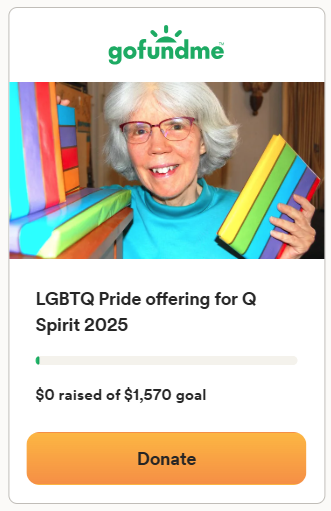
















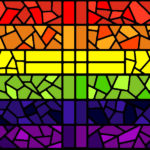

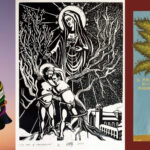
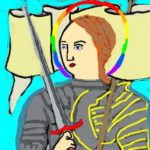
Kitt, thank you for bringing to our attention this very interesting person and minister. And interesting that the discussion heretofore has focused on the use of pronouns rather than any spiritual question. As a long-time writer, I have been led kicking and screaming to accept the pronoun “they” referring to myself, as I’m not able to identify as either a “he” or a “she.” But we live in a very binary world, and I’m curious to see how the younger generations will proceed with these gender questions.
As one “long-time writer” so another, I can relate to your struggles with using “they” to refer to an individual. I keep revising this article every year, trying to find the pronouns and images that sound right for Publick Universal Friend. When I feel frustrated by inner grammar expert telling me is “sounds wrong,” I remember how sure I was that I was doing the right thing when I imposed “inclusive language” on church members in the 1980s by removing all references to God as “he” in worship services, even in favorite Christmas carols.
This article says: ‘Upon waking the person formerly known as Jemima Wilkinson confidently announced to a surprised family that Jemima had died and her body was now inhabited by a genderless “Spirit of Life from God” ‘, which you’re trying to link to transgenderism. If she had died and her body was now inhabited by a Divine soul rather than her own soul, then she didn’t decide to change her own gender identity, but rather her body was now inhabited by a different entity entirely. If, on the other hand, she was making the whole story up, then she wasn’t being honest about any of it. It’s difficult to see how this has any possible link to transgenderism unless you’ve decided that you know her true situation better than she did.
I agree with you, @Carter. Ms. Cherry, you should and are allowed to use what ever pronouns you want to use to describe someone. Especially in this case. It doesn’t matter if it’s “she/he” or “he/she” its the same thing. Besides, saying them, to me, is meant for more than a single person, and you’re talking about a single person that happens to wish and believe that she is genderless. But if you’re talking about the followers, then “they” is perfectly fine. It’s honestly better than saying her as “it” when describing a genderless person because calling a person as “it” means “whatever it is,” and saying is the informal and rude way of but it can it also can not be rude at all as they seem to given up their gender to genderless saying “it” is the best way to go. Especially saying “he/she” or “she/he” actually admits that they have a gender. The only humans that can be both and should be allowed use “he/she” or “she/he” are hermaphrodites, people who were born with female and male reproduction organs. Also, @Caoimhe, if you looked more information about Jemima Wilkinson, you would find that she and her followers actually prefer to announce and address themselves using male pronouns. So using “he” when talking about Wilkinson and describing what he did is correct, as it follows what his religion wished. Here’s the website that said so. https://www.britannica.com/biography/Jemima-Wilkinson
Thanks, Mutt. You provided the first source I’ve seen saying that “both Wilkinson and the followers of the Friend used male pronouns to refer to him.” Very helpful! I personally find that using “they” to refer to an individual feels inaccurate in a different way, avoiding the gender issue but raising the issue of whether they are one person. I continue to grow and reflect on these issues of language.
Kittredge Cherry, Your use of “he/she”to me seems appropriate and an accurate use of language when talking about the unique life of Jemima Wilkinson. I think the person who was finding fault with the use of ‘he/she’ and referring to its use as transphobic is incorrect and placing unnecessary spin on your writing. The use of “them” would be cumbersome. You should continue the write the way you feel is correct when it comes to the wonderful JWilkinson, and not feel policed.
Caoimhe: I hardly think that Jemima Wilkins would have the same feelings about being called a he or she. The ultra sensitivity to labels we have today shouldn’t be placed on a person who live over 200 years ago. What is interesting about this is how you are sensitive to a pronoun, but not concerned at all by Lawrence Evans’ ultra conservative evangelical BS incorrectly applied to an individually who couldn’t be farther from that level of thinking. Just my thoughts. Kittredge Cherry, you are too kind.
I admire “the Friend” for being a firm believer in sexual abstinence. S/he realized that when sex enters any relationship outside of God’s design and purpose, problematic ‘seeds’ are planted.
“God created us as male or female in his image” Genesis 1:7. And, because of our ‘original sin’, we realize that all people, by genetics and environment, are predisposed to various types of attractions that are temptations. Some of us are tempted toward heterosexual sin, some toward inclinations to hurt or steal from others, some toward same sex attraction temptations, but all of us fall short of God’s law (Romans 3:23).
The ‘Friend’ realized that problems arise when we misplace our “identity” which is to be in Jesus Christ–not the world, our job, our possessions, or our sexuality. We are new creations in Christ (2 Corinthians 5:17). Our lives in light of our identity in Christ are filled with a heavenly Father, a large, loving family, and the understanding that we are citizens of another kingdom and not of this earth.
This brief article is excellent:
https://www.joycemeyer.org/articles/ea.aspx?article=finding_my_identity_in_christ
If they said they were neither male nor female, why are you erasing that by using feminine pronouns? You then switch to “she/he” which strikes me as very transphobic.
I tried to use female pronouns only for before Jemima became the Friend. As far as I know, the Friend did not claim to be born without gender, but transformed into that state through a near-death experience. I didn’t intend to be transphobic with “she/he.” What would you suggest? “They”? “Ze”?
I think the neutral “They” would look best. I’ve only ever seen “he/she” as a transphobic way of saying “whatever it is”. I’m in no way asserting that that was your intent, and I hope it didn’t come off as such.
Thanks for your suggestions. I went ahead and made quite a few changes to try to reword it without using any pronouns for the Friend after “Jemima” died. One unexpected problem I have encountered with aging is that my language becomes old-fashioned before I know it. “He/she” used to be a respectful term. And to me referring to an individual as “they” feels awkward. I’m getting used to it, but I used other workarounds here that sound smoother to my ear.